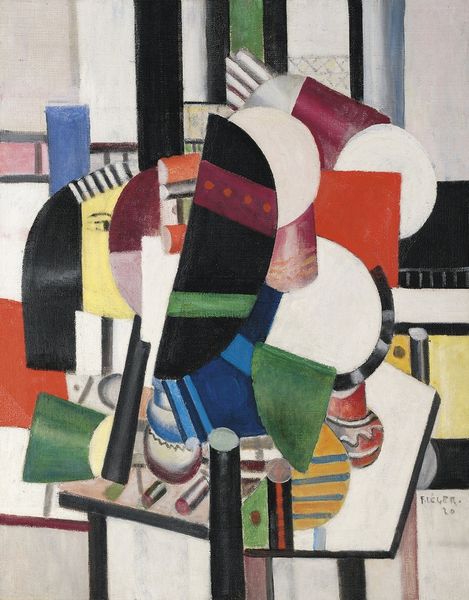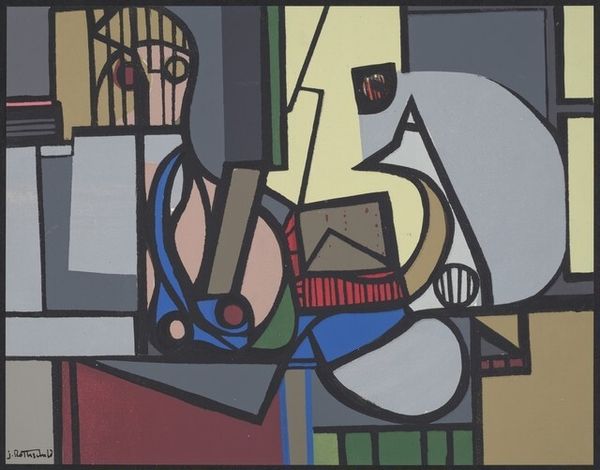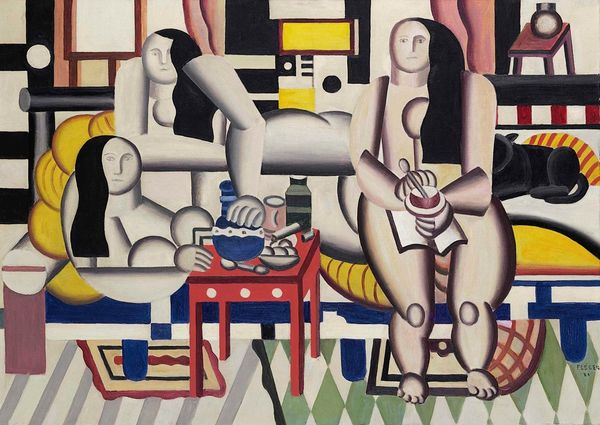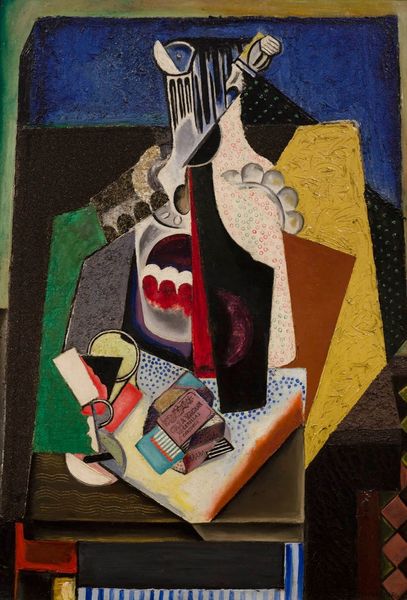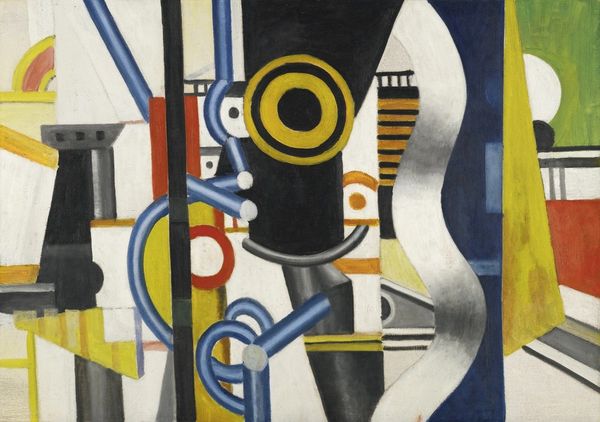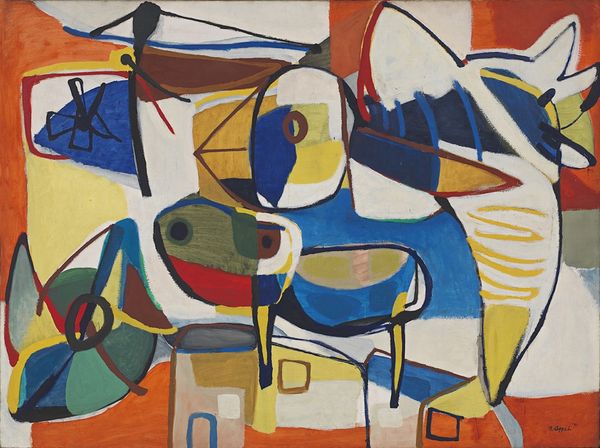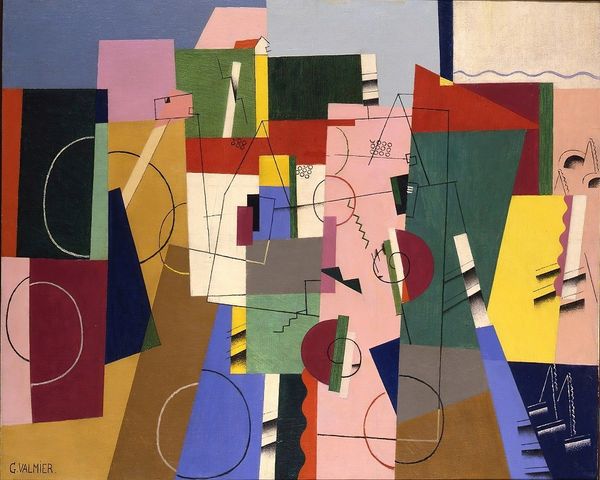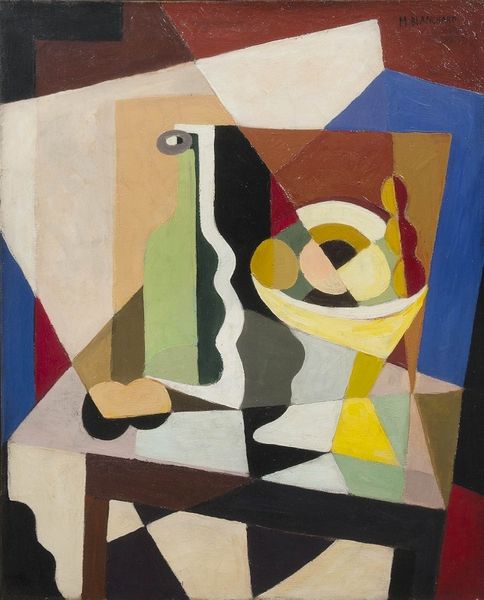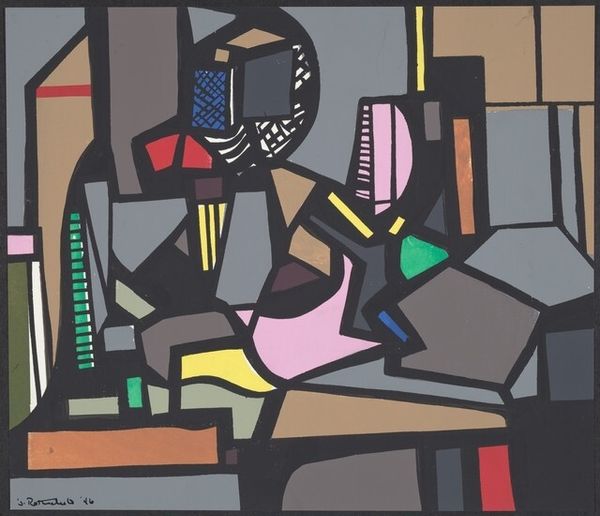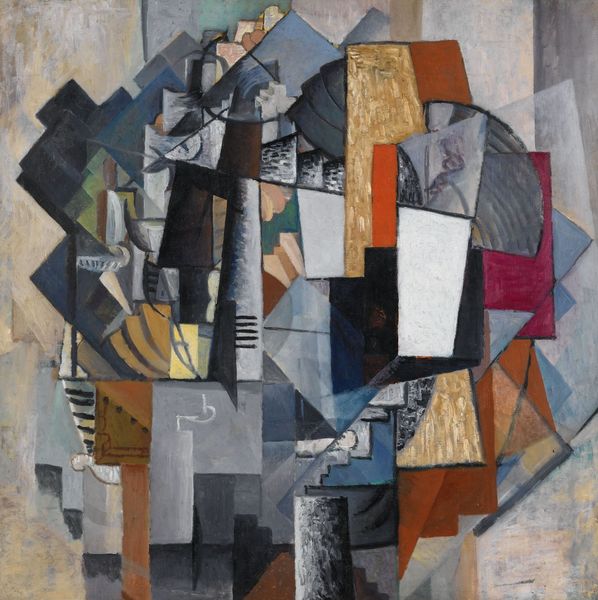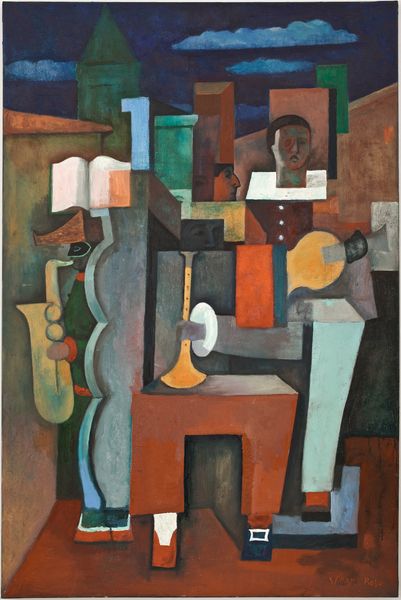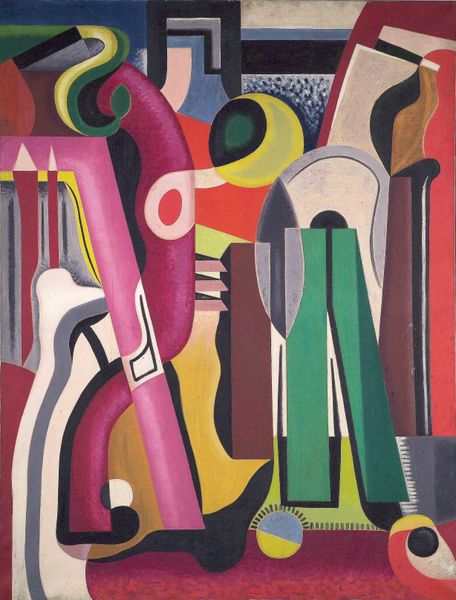
painting, oil-paint
#
portrait
#
cubism
#
abstract painting
#
painting
#
oil-paint
#
neo expressionist
#
acrylic on canvas
#
geometric
#
expressionism
#
abstraction
#
modernism
#
expressionist
Copyright: Modern Artists: Artvee
Curator: Let’s take a look at Pablo Picasso's "Studio with Plaster Head," created in 1925. Painted with oil, this canvas presents us with an interior scene, rich with geometric shapes and seemingly disparate objects. Editor: It's almost confrontational, isn't it? All those angles and contrasting planes...there is a fragmentation and an attempt to bring diverse realities on the same canvas at the same time. The colour palette almost seems arbitrarily cheerful. Curator: Indeed. We see here a combination of still life elements – a book, an orange, plaster casts – placed against a backdrop suggesting architecture. Consider how the application of paint varies. In some areas, there are controlled blocks of color; in others, brushstrokes are much more gestural. I find myself drawn to the different production methods it suggests and also hides from the viewer. Editor: And the plaster head itself—it seems to allude to classical antiquity. In this modern cubist setting, the sculpture speaks of inherited traditions and the very idea of artistic practice being anchored to its classical roots, which can both be a nod and a rebellious scream to it. And also, it hints at a deconstruction of those old themes... Curator: I would agree that that there is some sort of intentional deconstruction happening within this artwork. There is the relationship of what has come before as well as pushing at what possibilities may arise within material object, process, and method of making. There are so many ways that production affects reception! Editor: Looking again at the arrangement of these disparate objects, it seems to me like a commentary on art’s ability to transform mundane things into symbols with much cultural weight, isn't it? It is all so layered with potential narratives! Curator: Yes, a great artist’s studio may seem a mess with unfinished sculptures and geometrical cityscapes... and the artist comes to their craft using all that mess to transform meaning and affect the very shape of things that viewers end up beholding in wonder. Editor: Ultimately, this picture is about that transforming wonder... and where exactly to locate its potential source. Curator: Well said! It provides great food for thought, doesn't it? A reminder of the complex interplay between art and life.
Comments
No comments
Be the first to comment and join the conversation on the ultimate creative platform.
